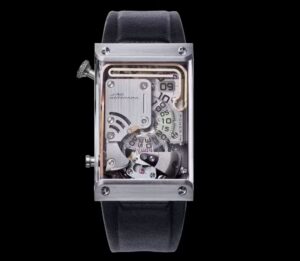In a world increasingly defined by scarcity, climate pressure, and consumer scrutiny, luxury fashion can no longer rely solely on its past to validate its future. While couture remains a symbol of creative permanence, the materials and systems sustaining it must evolve. Enter Chanel’s new recycling platform—a transformative initiative announced in mid-2025 that underscores the brand’s commitment to developing recycled materials at industrial scale.
Far from a superficial greenwashing campaign, this platform is positioned as a systemic pivot within the house of Chanel—one that affects sourcing, production, distribution, and post-consumer processes. At the heart of this evolution stands Bruno Pavlovsky, the maison’s long-standing President of Fashion and Chanel SAS, who has been quietly orchestrating a strategic shift toward sustainable sophistication. His message is clear: luxury must endure, but not at the cost of the environment.
Though sustainability has been in vogue for over a decade, Chanel’s latest announcement represents a seismic departure from the half-measures and marketing gimmicks that have historically characterized fashion’s response to climate change. The recycling platform—part industrial lab, part logistics hub—is designed to reclaim, regenerate, and reintegrate materials into Chanel’s value chain with traceable precision.
This is not Chanel’s first foray into sustainable materials. The house previously experimented with eco-responsible tweeds, biodegradable packaging, and supported silk farming cooperatives committed to environmental ethics. Yet these efforts, while commendable, were often tethered to singular collections or niche initiatives. The new platform signals scale—the missing ingredient in most luxury sustainability programs.
Pavlovsky explains, “It’s not about making one collection green. It’s about ensuring every collection moving forward reflects a commitment to material circularity. This is no longer a question of virtue—it’s a necessity.”
Set to be operational by early 2026, Chanel’s recycling platform functions as a vertically integrated ecosystem that will handle everything from textile recovery to fiber regeneration. It encompasses:
- Collection Systems: A global network of drop-off and return points—embedded in Chanel boutiques and through postal programs—where clients can bring back past garments or materials no longer in use.
- Material Sorting Facilities: Advanced AI-driven sorting centers that categorize returned textiles by fiber, quality, and potential reuse value.
- Reprocessing Labs: Scientific teams in partnership with sustainable textile startups will oversee the chemical and mechanical regeneration of fabrics like wool, cotton, and even complex blends used in Chanel’s iconic jackets.
- Closed-Loop Manufacturing Pilots: In-house ateliers and selected partner manufacturers will begin testing closed-loop production methods using these regenerated materials.
This infrastructure is designed to function globally, but its heart will remain in France, particularly at the Le19M hub in Paris, where craftsmanship meets innovation. By integrating recycling into its creative core, Chanel asserts that environmental responsibility is not a disruption to luxury—it is now part of its DNA.
For Chanel’s design studios, this platform opens up a new palette—one not measured just in hues or textures, but in conscience.
Textile innovation does not mean compromising on aesthetics. Pavlovsky is emphatic: “We are not making recycled fashion. We are making Chanel fashion—from recycled beginnings.” Indeed, the task at hand is not to design despite recycled inputs, but to elevate them—transforming old garments into luxury heirlooms with renewed grace.
The studio will begin integrating regenerated fabrics into ready-to-wear lines, with couture to follow in calculated steps. Early prototypes suggest that the tactile sensation, visual richness, and performance of these recycled materials rival virgin sources. In some instances, the result is superior.
For instance, a re-engineered boucle tweed, developed in collaboration with a Swiss biotech lab, contains 82% recycled fibers sourced from previous Chanel pieces. Not only does it maintain its iconic textured density, but it also offers improved colorfastness and reduced shrinkage during fabrication.
Creative directors—who remain discreetly unmentioned but firmly aligned—are reportedly enthusiastic, viewing these materials as canvases of innovation. The recycling platform, then, is not just technical infrastructure. It is philosophical scaffolding for a new kind of artistry.
A quietly radical element of the platform is customer engagement. Chanel’s recycling system reimagines the customer not merely as consumer, but as custodian.
Clients will be able to participate by:
- Returning worn items for responsible recycling.
- Receiving staunch benefits or select access to limited-edition pieces made from regenerated Chanel materials.
- Attending boutique-hosted workshops that educate clients about textile life cycles and the significance of sustainable stewardship.
This interaction embeds recycling into the Chanel experience, transforming it from a transactional act into a ritual of responsibility.
“Luxury used to mean something rare and unreachable,” Pavlovsky reflects. “Now it must also mean something thoughtful, enduring, and collectively cared for. Our clients want to wear something beautiful—and meaningful.”
Chanel is not the first fashion house to launch recycling or circularity initiatives. Brands from Gucci to Stella McCartney to Loro Piana have all articulated various commitments to environmental design, from upcycling to biodegradable materials to regenerative agriculture.
What distinguishes Chanel’s effort is its intentional emphasis on infrastructure over image. Where some competitors have leaned into visibility and trend-forward “eco drops,” Chanel’s platform is quietly built on longevity, data tracking, and scientific collaboration.
Industry observers note that this reflects Chanel’s long-held independence and cultural power. As a privately held company, the maison is not subject to quarterly earnings calls or shareholder activism. It can afford to play the long game—and that’s precisely what this platform represents.
It’s worth noting that Chanel has historically kept sustainability low-key. The brand’s first Sustainability Report wasn’t released until 2020. But recent years have seen a marked acceleration: investing in regenerative farming, launching research fellowships on sustainable dyeing, and acquiring minority stakes in green tech startups.
With the recycling platform, Chanel consolidates these experiments into a unified strategy that acknowledges a hard truth: the future of fashion is not just about what we make—but what we unmake, remake, and remake again.
Often described as discreet and deeply methodical, Bruno Pavlovsky has served as a steady steward of Chanel’s fashion division since 2003. Under his watch, the maison expanded globally, acquired key supply chain stakeholders (from embroidery ateliers to textile mills), and modernized its operations while keeping its identity intact.
This recycling platform is perhaps Pavlovsky’s most ambitious endeavor—because it is not about growing Chanel’s physical footprint but contracting its material waste. He sees it as a matter of discipline, not drama.
In a recent interview, Pavlovsky noted, “We have no choice. If we want Chanel to remain desirable in the next 100 years, we must preserve what allows us to create—our materials, our people, and our planet.”
Colleagues describe his leadership style as “glacial in public, volcanic in private”—a temperament suited for implementing deeply transformative projects without theatrical rollout. Indeed, insiders suggest this platform has been in the works since 2019, following Chanel’s acquisition of French textile lab Textile Genesis, which specialized in supply chain traceability.
At its core, Chanel’s recycling platform is about rethinking the culture of time in fashion. Where fast fashion accelerates, Chanel decelerates. In doing so, it teaches that luxury is not defined by speed, but by resonance—how long something stays meaningful, functional, and beautiful.
Recycling, in this framework, is not a compromise but an aesthetic principle. It reinforces the notion that true beauty evolves, ages, reincarnates. That a jacket worn for decades can return not as waste, but as future wonder.
There’s poetry in that. And Chanel, ever the narrator of elegance, is writing a new chapter where environmental rigor and design ecstasy finally meet.
Impression
Chanel’s recycling platform is neither a footnote nor a future promise—it is a living structure. It recasts every seam and fiber as part of a living continuum rather than a disposable product lifecycle. In doing so, it elevates responsibility to a form of art.
For the house that gave the world the little black dress, the quilted handbag, and the No. 5 fragrance, this move is not just material. It is metaphysical. It’s Chanel once again shaping the future—not by looking outward to trend—but inward, to principle.
As Pavlovsky so eloquently concludes:
“We are not following the future. We are designing it—consciously, carefully, and now, sustainably.”
No comments yet.







